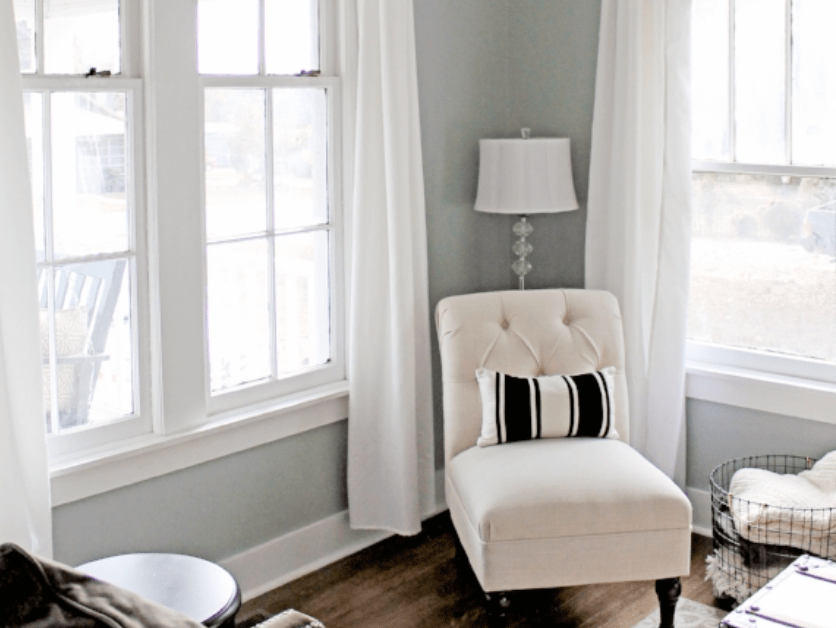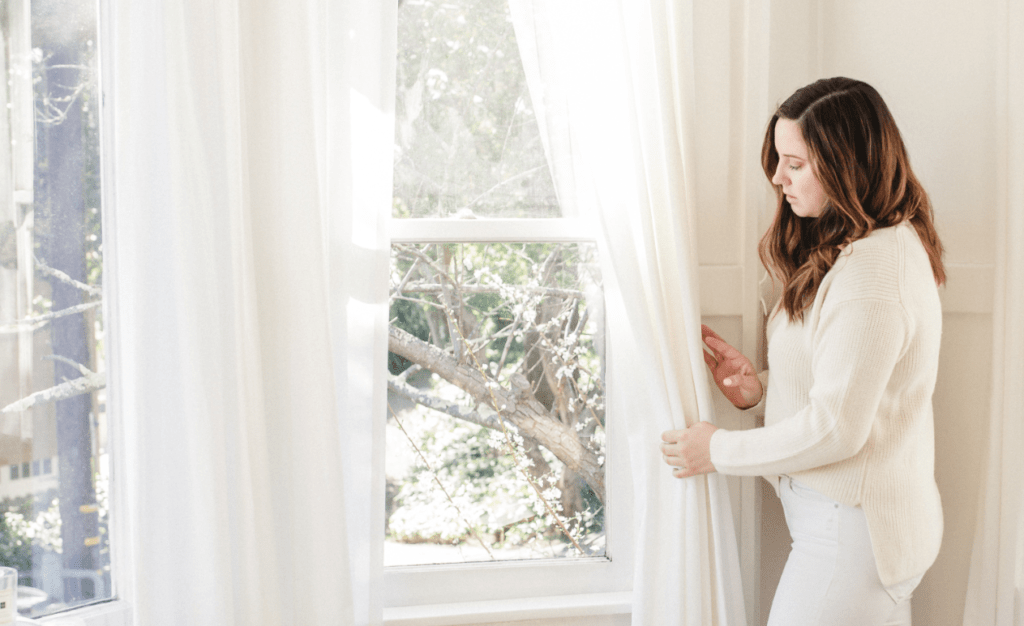Choosing the right window treatments for your home can indeed be a challenging task. With an array of types, features, and fabrics available, the decision-making process can feel overwhelming. However, fear not! In this guide, we’ll break down the different types of window treatments, highlight key features to consider, delve into various fabric options, and provide you with helpful advice to make the selection process easier.
Types of Window Treatments

Firstly, let’s explore the different types of window treatments you can consider:
- Curtains and Drapes: Curtains and drapes are classic window treatments that come in a variety of styles, lengths, and fabrics. They are versatile, offering both privacy and light control. Choose heavier fabrics like velvet or brocade for a formal look or lightweight fabrics like linen or cotton for a more casual feel.
- Blinds: Blinds are a popular choice for their sleek and modern appearance. They come in various materials, such as wood, aluminum, and vinyl. Blinds offer excellent light control and are available in different slat sizes to suit your preferences.
- Shades: Shades are another versatile option for window treatments. They come in various styles, including roller shades, Roman shades, and cellular shades. Shades offer privacy and light control while adding a clean and contemporary look to your space.
- Shutters: Shutters add a touch of elegance to any room. They come in different styles, such as plantation shutters, traditional shutters, and café shutters. Shutters are durable, easy to clean, and provide excellent insulation.
Features to Consider
Now, let’s discuss some essential features to consider when choosing window treatments:
- Light Control: Determine how much natural light you want to let into your space. If you prefer diffused light, sheer curtains or light-filtering shades may be ideal. For maximum light blockage, consider blackout curtains or blinds with adjustable slats.
- Privacy: Assess the level of privacy you need for each room. Bedrooms and bathrooms may require more privacy, while living areas may benefit from sheer curtains or blinds that allow some visibility while still maintaining privacy.
- Insulation: Consider the insulation properties of your window treatments, especially if you live in a climate with extreme temperatures. Thermal-lined curtains or cellular shades can help regulate indoor temperatures and reduce energy costs.
- Style and Décor: Think about the overall style and décor of your home. Choose window treatments that complement your existing furnishings and enhance the aesthetic appeal of each room.
Fabrics for Window Treatments
When it comes to fabrics, there are several options to choose from, each offering unique characteristics and benefits:
- Cotton: Cotton, known for its durability and versatility, is a popular choice for curtains and drapes. It comes in various weights and textures, making it suitable for both casual and formal settings.
- Linen: With its natural, relaxed look, linen adds texture and depth to window treatments. It’s perfect for creating a cozy and inviting atmosphere, ideal for living rooms and bedrooms.
- Silk: For a touch of luxury and elegance, consider silk curtains or drapes. Silk drapes beautifully and adds a sense of opulence to any room, perfect for formal dining areas or master bedrooms.
- Polyester: Polyester is a practical choice for window treatments due to its easy maintenance and durability. It comes in a wide range of colors and patterns, offering endless design possibilities for any room in your home.
What Kind of Window Treatments Should I Use?

Now that we’ve covered the types, features, and fabrics of window treatments, you may be wondering, “How do I choose the right one for my home?” Well, here are some helpful tips to guide you through the decision-making process:
1. Consider Your Space
Take a holistic approach to understanding your space. Assess the size, layout, and architectural features of the room, as well as its purpose and the ambiance you wish to create.
For example, in a small room with limited natural light, lightweight fabrics like sheer curtains or light-filtering shades can maximize brightness and create an airy feel. In contrast, for a larger room with ample sunlight, heavier drapes or blinds with adjustable slats can provide greater light control and privacy.
2. Consider Functionality
Define the primary functionality you need from your window treatments. If privacy is paramount, consider options such as blackout curtains, top-down, bottom-up shades, or privacy blinds. For rooms that require both privacy and ample natural light, translucent fabrics or sheer shades offer an excellent balance. If energy efficiency is a concern, opt for cellular shades or insulated curtains to regulate indoor temperatures and reduce heating or cooling costs.
3. Consider Features
When prioritizing features, focus on those that align with your needs and lifestyle. For example, if you have pets or small children, cordless or motorized window treatments offer convenience and safety. If you’re concerned about maintenance, machine-washable fabrics or stain-resistant treatments can simplify cleaning.
4. Explore Design Options
Once you’ve identified your functional requirements, explore design options that complement your space and personal style. Curtains and drapes come in a myriad of fabrics, patterns, and textures, allowing you to add warmth, depth, and visual interest to your room. Blinds offer versatility and sleekness, with options ranging from classic wood to contemporary aluminum. Shades provide a clean and modern aesthetic, with variations such as roller shades, Roman shades, and honeycomb shades to suit any decor theme.
5. Set a Realistic Budget
Set a realistic budget for your window treatments while considering both upfront costs and long-term value. Ready-made options are often more budget-friendly than custom treatments and come in standard sizes and styles to fit most windows.
If your budget is limited, prioritize window treatments for essential areas such as bedrooms, living rooms, or home offices, where privacy, light control, and comfort are paramount. You can then gradually upgrade or expand your window treatment collection over time as finances allow.
Final Thoughts
Finding the right window treatments is about understanding your needs, considering functionality, exploring design options, and staying within your budget. By taking these factors into account, you can choose treatments that enhance both the beauty and functionality of your home.
Whether you prioritize light control, privacy, energy efficiency, or style, there are options available to suit every need and preference. Ready to transform your space? Explore our website for a wide range of shades and window treatments tailored to your style and preferences.
